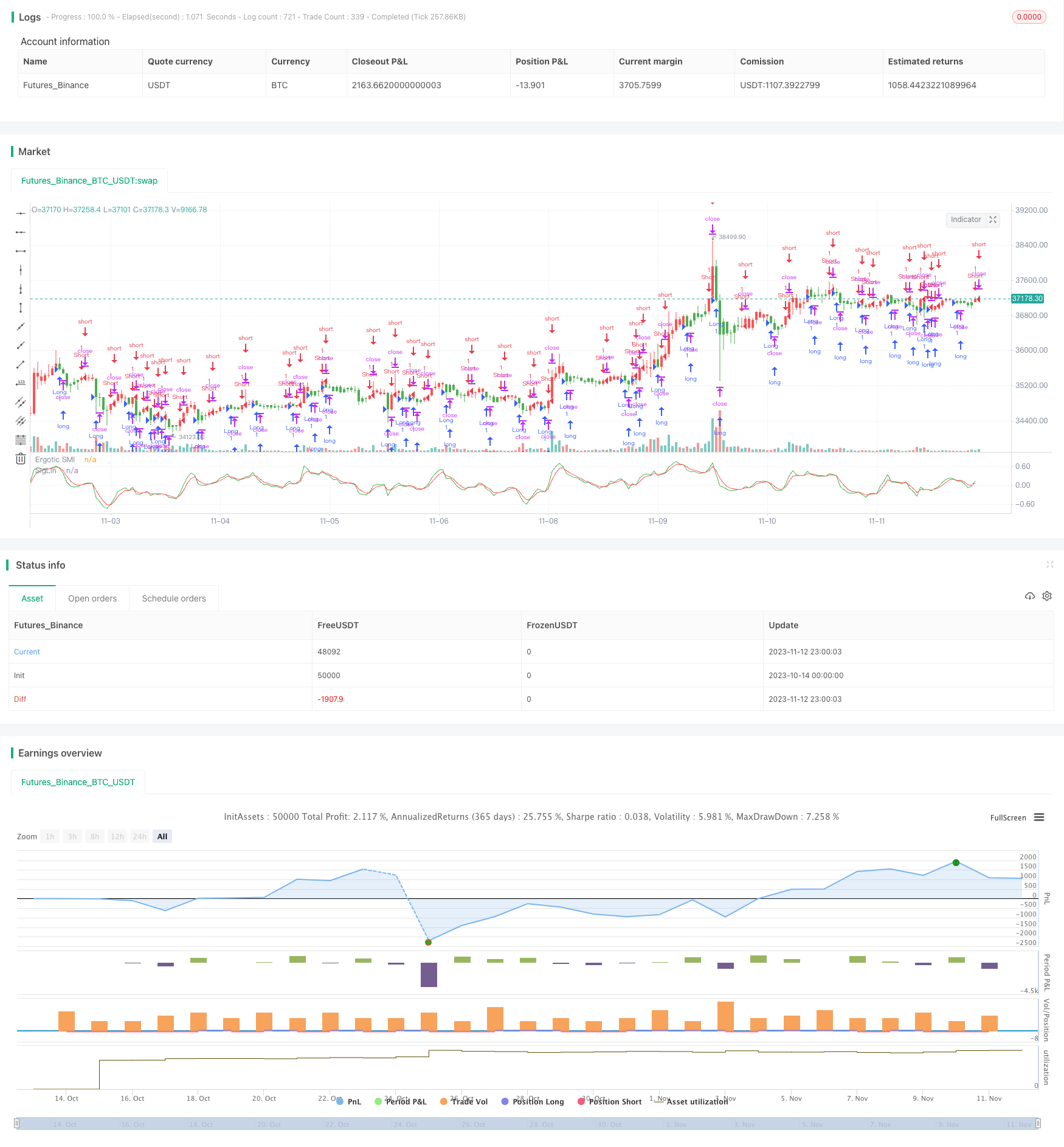
概述
双移动均线趋势跟踪策略通过计算价格的双重指数移动平均线,形成快线和慢线,根据两线的交叉形态判断价格趋势,实现趋势跟踪交易。该策略属于基于趋势跟踪的量化交易策略。
策略原理
该策略首先计算价格的双重指数移动平均线,包括快速线和慢速线。快速线参数为4周期,慢速线参数为8周期。两线交叉时产生买入和卖出信号。当快线从下方上穿慢线时,产生买入信号;当快线从上方下穿慢线时,产生卖出信号。此外,该策略还计算MACD指标,以发散红色柱线作为卖出信号,聚合绿色柱线作为买入信号。综合双移动均线交叉和MACD指标,可以判断价格趋势方向,实现趋势跟踪交易。
优势分析
该策略首先可以顺应价格趋势进行交易,避免 Transaction Costs。其次,双移动均线过滤掉价格的部分噪音,能够顺利把握价格趋势。再者,该策略参数优化灵活,移动均线周期和MACD参数都可以进行调整,适应不同品种和参数。最后,策略逻辑简单清晰,容易理解和实现,适合量化交易的算法设计。
风险分析
该策略依赖参数优化,如果参数设置不当,将产生大量错误信号。此外,双移动均线具有滞后性,可能错过价格转折点位。另外,趋势交易容易形成“追高杀跌”的模式,存在一定的风险。此外,交易品种的流动性和手续费也会影响策略收益。为降低风险,可以适当优化参数,结合其他指标过滤信号,控制仓位规模。
优化方向
该策略可以从以下几个方面进行优化:
优化双移动均线的周期参数,寻找最佳参数组合
增加其他指标过滤信号,例如RSI,KD等,提高信号质量
增加止损策略,在趋势反转时及时止损
根据市场情况动态调整仓位大小,控制风险
针对不同交易品种参数进行优化
结合高级策略,如机器学习等提升策略效果
总结
本策略整体来说是一个基于双移动均线的简单趋势跟踪策略。策略思路清晰,易于实现,参数调整灵活,适合作为量化交易的入门策略。但该策略存在追涨杀跌、信号滞后等问题,需要进一步优化来控制风险,提高稳定性。总体而言,本策略为初学者提供了一个学习算法交易的好机会,也为高级策略打下基础。
/*backtest
start: 2023-10-14 00:00:00
end: 2023-11-13 00:00:00
period: 1h
basePeriod: 15m
exchanges: [{"eid":"Futures_Binance","currency":"BTC_USDT"}]
*/
//@version=2
////////////////////////////////////////////////////////////
// Copyright by HPotter v1.0 12/11/2017
// The SMI Ergodic Indicator is the same as the True Strength Index (TSI) developed by
// William Blau, except the SMI includes a signal line. The SMI uses double moving averages
// of price minus previous price over 2 time frames. The signal line, which is an EMA of the
// SMI, is plotted to help trigger trading signals. Adjustable guides are also given to fine
// tune these signals. The user may change the input (close), method (EMA), period lengths
// and guide values.
// You can use in the xPrice any series: Open, High, Low, Close, HL2, HLC3, OHLC4 and ect...
//
// WARNING:
// - For purpose educate only
////////////////////////////////////////////////////////////
strategy(title="SMI Ergodic Oscillator")
fastPeriod = input(4, minval=1)
slowPeriod = input(8, minval=1)
SmthLen = input(3, minval=1)
TopBand = input(0.5, step=0.1)
LowBand = input(-0.5, step=0.1)
reverse = input(false, title="Trade reverse")
// hline(0, color=gray, linestyle=dashed)
// hline(TopBand, color=red, linestyle=line)
// hline(LowBand, color=green, linestyle=line)
xPrice = close
xPrice1 = xPrice - xPrice[1]
xPrice2 = abs(xPrice - xPrice[1])
xSMA_R = ema(ema(xPrice1,fastPeriod),slowPeriod)
xSMA_aR = ema(ema(xPrice2, fastPeriod),slowPeriod)
xSMI = xSMA_R / xSMA_aR
xEMA_SMI = ema(xSMI, SmthLen)
pos = iff(xEMA_SMI < xSMI, -1,
iff(xEMA_SMI > xSMI, 1, nz(pos[1], 0)))
possig = iff(reverse and pos == 1, -1,
iff(reverse and pos == -1, 1, pos))
if (possig == 1)
strategy.entry("Long", strategy.long)
if (possig == -1)
strategy.entry("Short", strategy.short)
barcolor(possig == -1 ? red: possig == 1 ? green : blue )
plot(xSMI, color=green, title="Ergotic SMI")
plot(xEMA_SMI, color=red, title="SigLin")